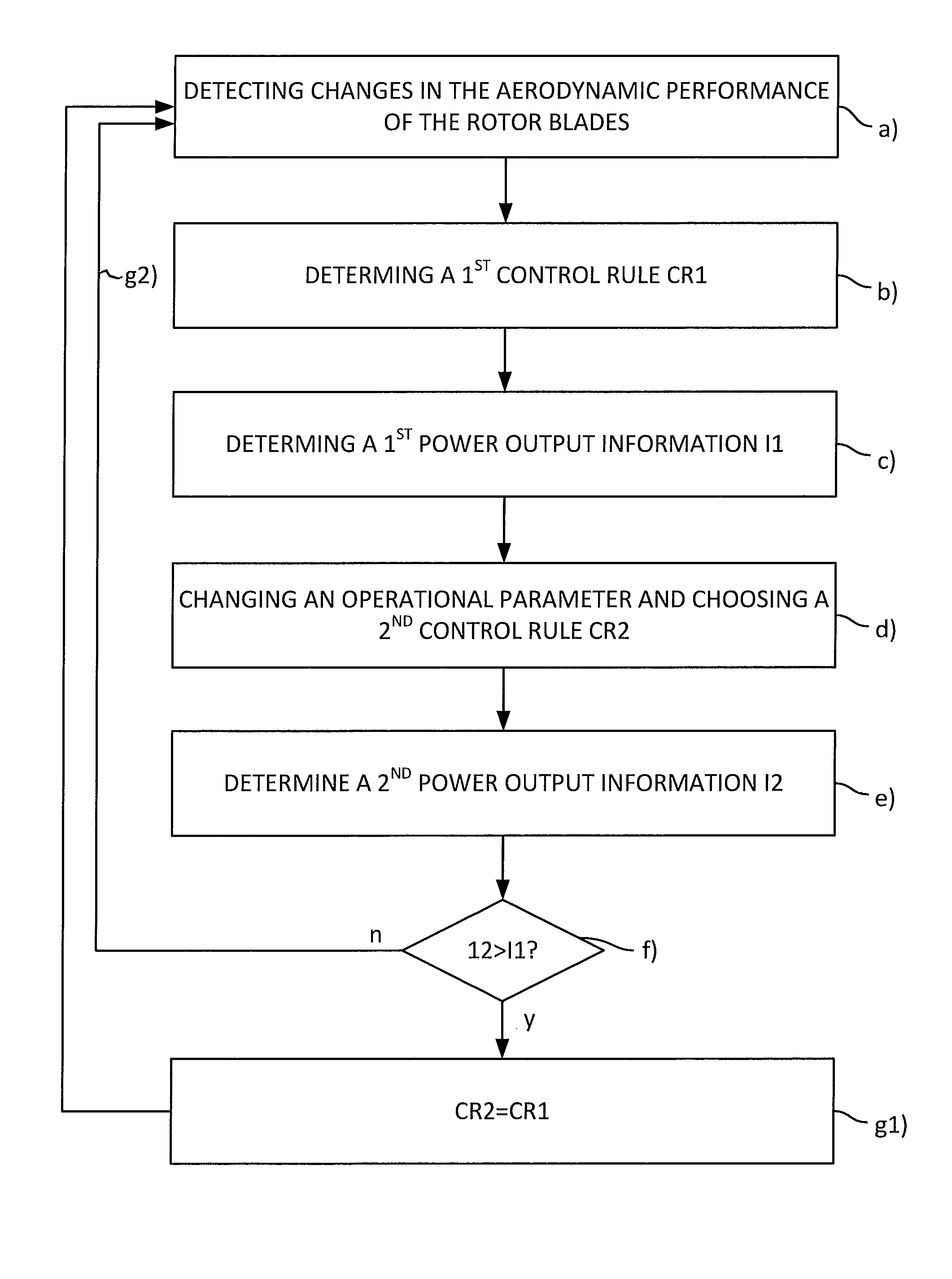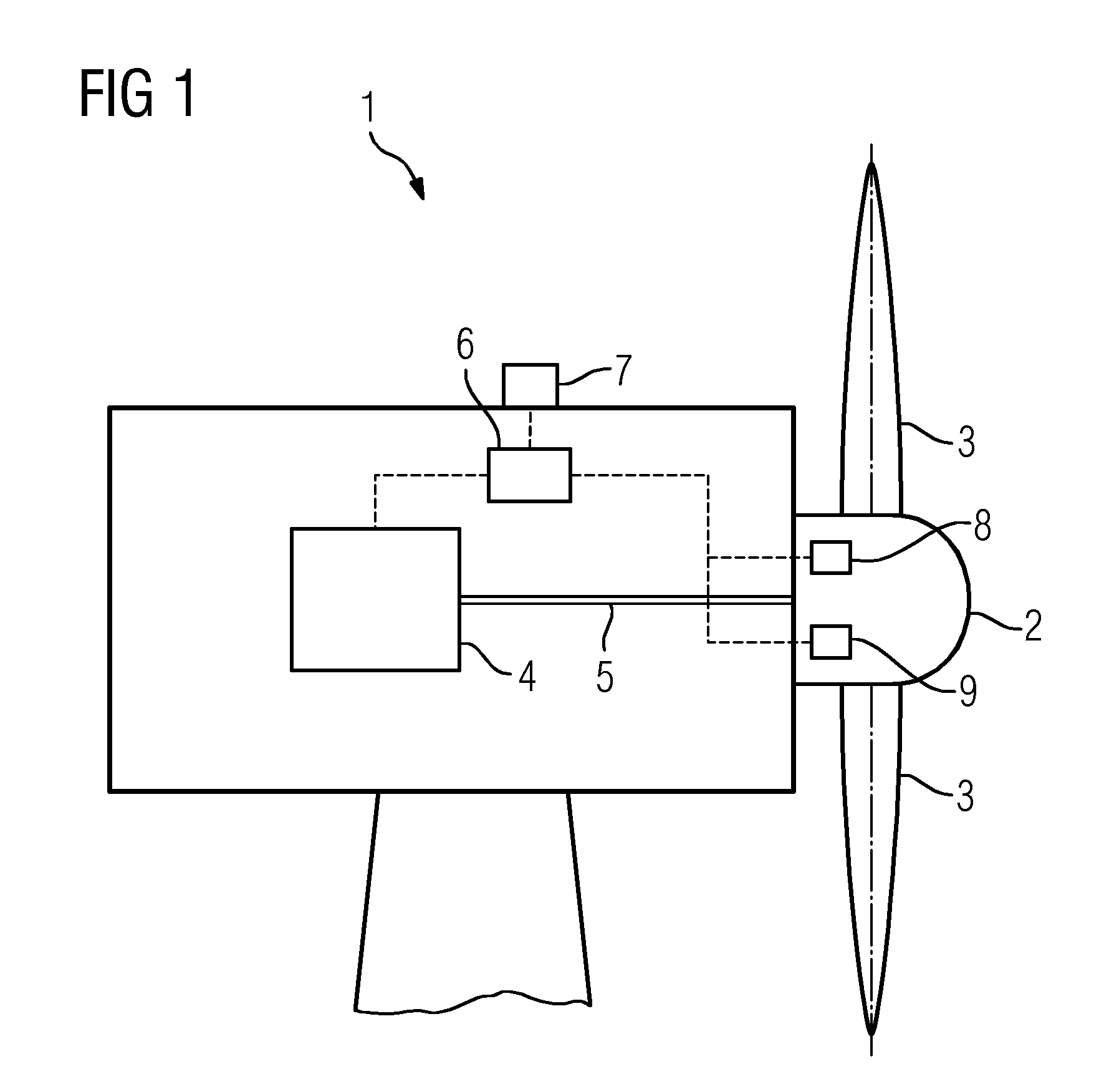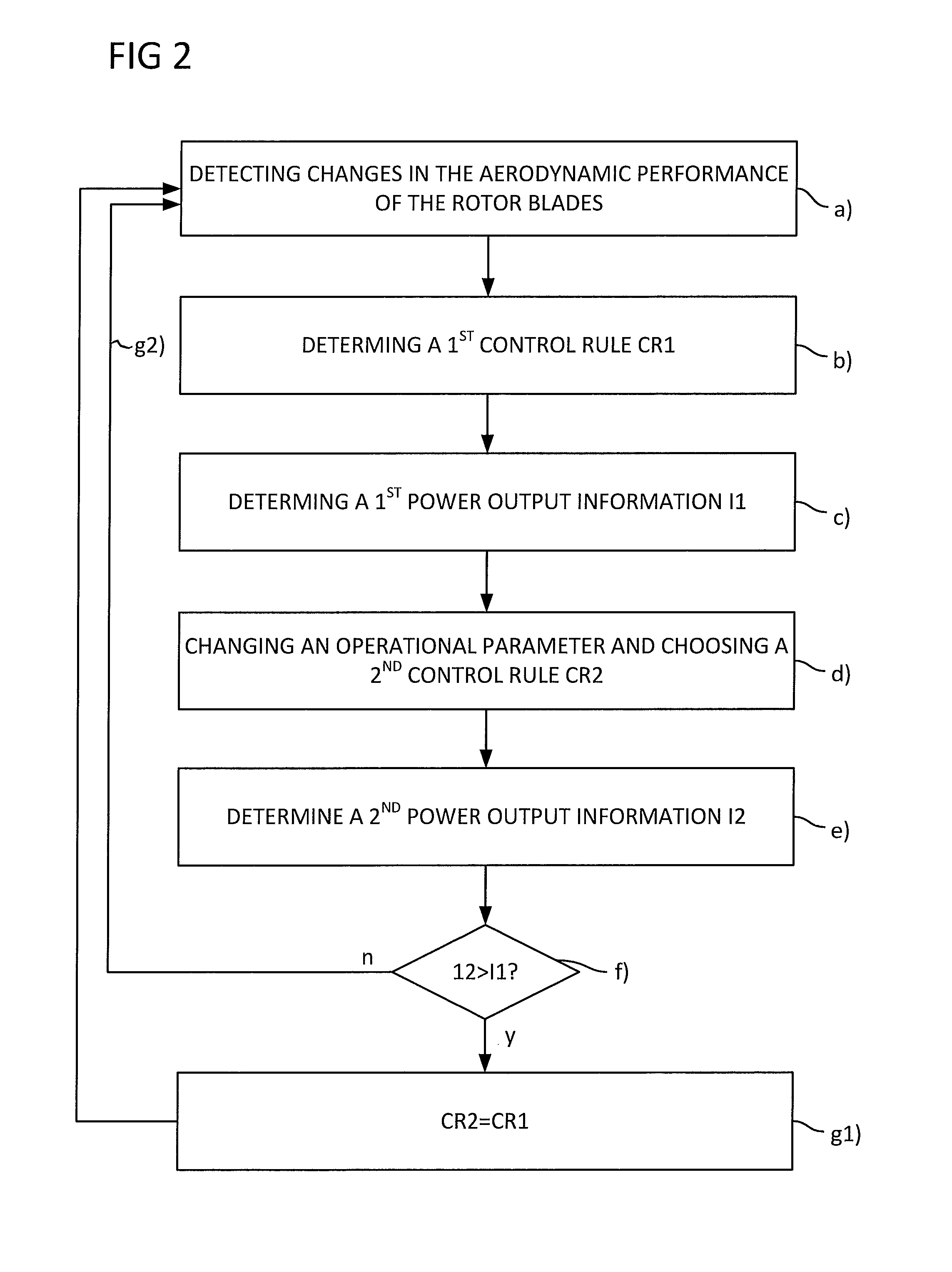Method for operating a wind turbine having a rotor hub supporting at least one rotor blade
a technology of rotor blades and wind turbines, which is applied in the direction of electric generator control, process and machine control, instruments, etc., can solve the problems of reducing the power production of the wind turbine, affecting the aerodynamic performance of the rotor blades, and the inability to achieve specific rated power production
- Summary
- Abstract
- Description
- Claims
- Application Information
AI Technical Summary
Benefits of technology
Problems solved by technology
Method used
Image
Examples
Embodiment Construction
[0071]FIG. 1 shows a principle drawing of a wind turbine 1 according to an exemplary embodiment of the invention. The wind turbine 1 comprises a rotor hub 2 supporting a number of rotor blades 3 with the rotor blades 3 being pitchable around their longitudinal axes by an appropriate rotor blade pitching means (not shown). The wind turbine 1 is a direct-drive wind turbine, i.e. the rotor hub 2 is directly coupled to a generator 4 by means of a main shaft 5. Yet, the provision of a gear box interposed between the rotor hub 2 and the generator 4 is not obligatory, but in principle possible.
[0072]Further, a control unit 6 in terms of a central wind turbine controller is provided which control unit 6 communicates with the generator 4 and respective sensor means provided with the wind turbine 1, i.e. a climatic sensor 7 providing climatic information regarding the climatic conditions in the region of the wind turbine 1 such as information relating to ambient temperature and / or ambient pre...
PUM
 Login to View More
Login to View More Abstract
Description
Claims
Application Information
 Login to View More
Login to View More - R&D
- Intellectual Property
- Life Sciences
- Materials
- Tech Scout
- Unparalleled Data Quality
- Higher Quality Content
- 60% Fewer Hallucinations
Browse by: Latest US Patents, China's latest patents, Technical Efficacy Thesaurus, Application Domain, Technology Topic, Popular Technical Reports.
© 2025 PatSnap. All rights reserved.Legal|Privacy policy|Modern Slavery Act Transparency Statement|Sitemap|About US| Contact US: help@patsnap.com



